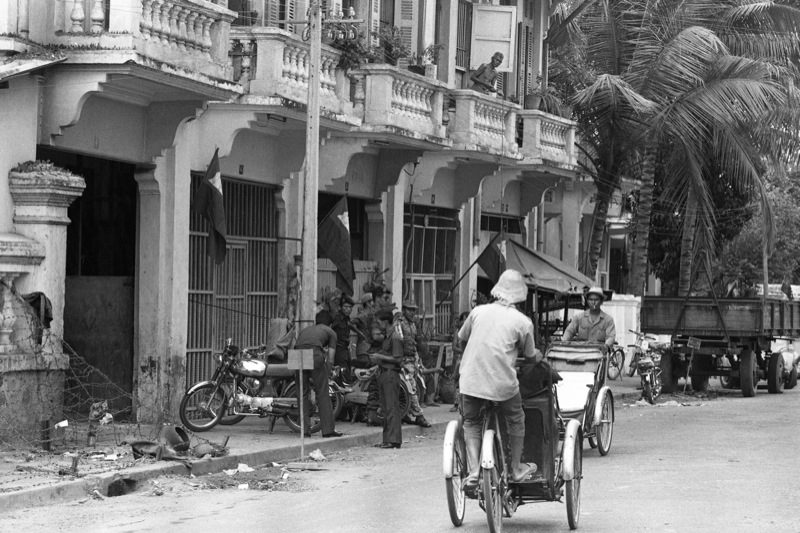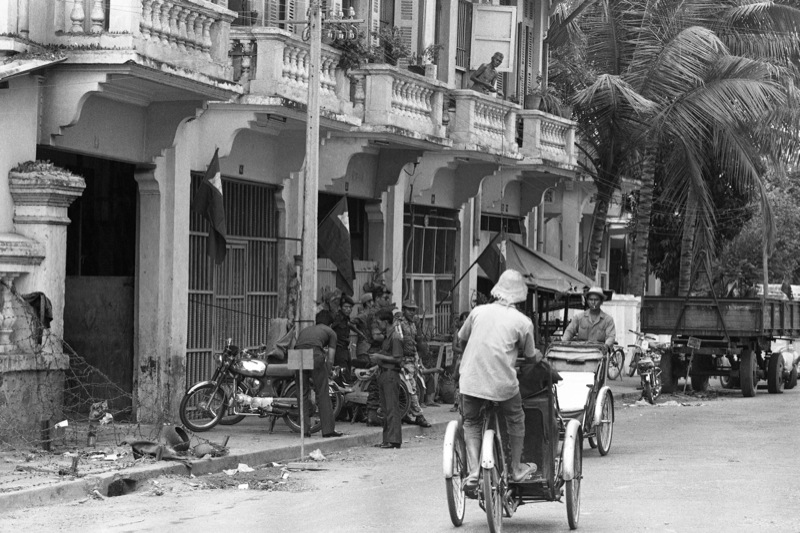British teacher Colin Grafton arrived in Phnom Penh in March 1973 to work at a language school. During the following two years, he would learn to live as any city resident did—in a state of acceptance that the capital was under siege.
“We didn’t live in an atmosphere of fear and trepidation,” he said on Tuesday. “We went about our business…. You expected a few rockets to come in during the day.”

“This was only in the dry season: In the rainy season, the Khmer Rouge always retreated,” Mr. Grafton said. “It was an illusion,” he said of the notion that the communist guerrillas were going away, “but a lot of people had that illusion.”
An exhibition of photographs he took at the time opens tonight at the Bophana Audiovisual Center in Phnom Penh. Some of the images show the bomb craters that became commonplace in Phnom Penh during the early 1970s, barely affecting the city’s daily routine.
Mr. Grafton was teaching in Laos when he first came to Cambodia in late 1972. “During the daytime, one could usually go back and forth,” he said. “But anywhere outside the main towns, the Khmer Rouge were in control at night.”
After securing a teaching job in the capital, he returned the following March.
“At that time, everyone was talking about the Japanese bridge because the bridge had been blown up. Twice, in fact. A first time, only partly successfully, the second time they made a good job of it. And they came across the bridge.”
Who “they” were was unclear at the time—some speculated it was guerilla insurgents, while others blamed the Vietnamese. (According to historian Raoul Jennar, the operation was carried out by a North Vietnamese commando unit.)
“They had attacked a surprised garrison, stolen some APCs—armored personnel carriers—and ridden around the town between Wat Phnom and the bridge. And it was a running battle,” Mr. Grafton recalled. “It was the first time that people in Phnom Penh had actually seen the war come into the city.”
As time went on, people could no longer venture outside the city: The Khmer Rouge forces were battering Lon Nol government’s troops. But Phnom Penh residents hoped for the best, Mr. Grafton said. “People expected a benign takeover.”
It is with reluctance that he left on April 7, 1975—a mere 10 days before the Khmer Rouge took control of Phnom Penh and the country—having been offered a place on an empty “rice plane” about to leave.

He spent a month in Laos and Thailand, hoping to return. But no news was coming out of Cambodia, and so Mr. Grafton left for Japan, where he would live for more than 20 years.
“I wanted to come back to Cambodia,” Mr. Grafton said. “This was the biggest event of my life, being here between ‘73 and ‘75. When I left, I left a lot of my students and friends.” This prompted him to volunteer in Cambodian refugee camps along the Thai border in 1979 and the 1980s, hoping to track down people he had known.
Now retired, Mr. Grafton has settled down in Cambodia.
Exhibition
What
“Phnom Penh Before the Fall: Snapshots From a Besieged City”
When
Opening reception tonight at 6:30 p.m.Runs through April 29.
Where
Bophana Audiovisual CenterFree admission




